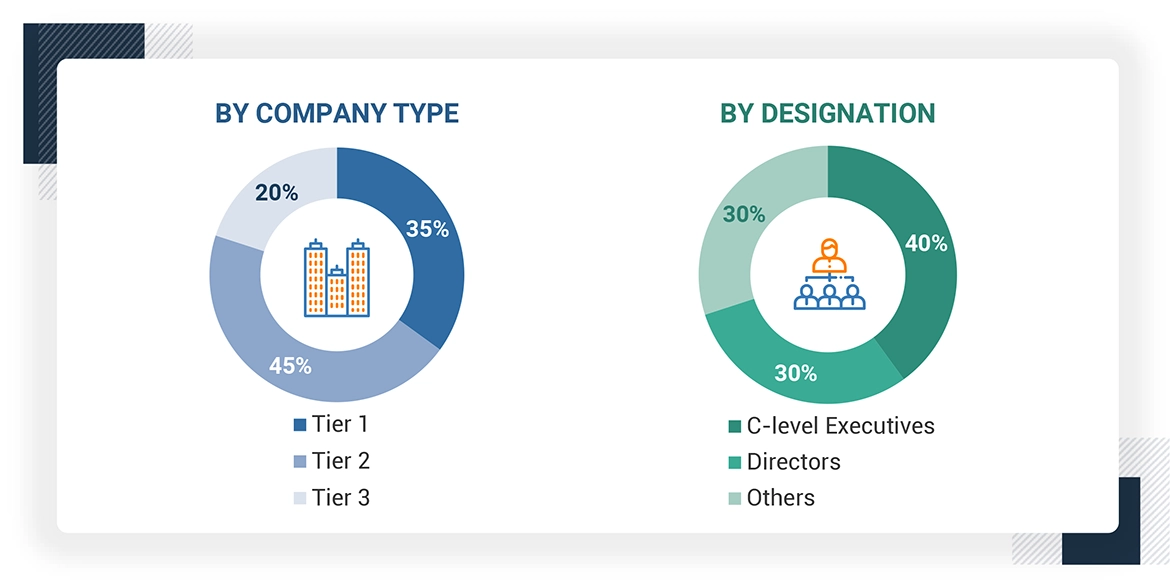The research study involved four major steps in estimating the European smart home market size. Exhaustive secondary research has been done to collect important information about the market and peer markets. The next step has been to validate these findings and assumptions and size them with the help of primary research with industry experts across the value chain. Both top-down and bottom-up approaches have been used to estimate the market size. After this, the market breakdown and data triangulation approaches have been adopted to estimate the market sizes of segments and subsegments.
Secondary Research
In the secondary research process, various secondary sources were referred to identify and collect information required for this study. The secondary sources include annual reports, press releases, investor presentations of companies, white papers, and articles from recognized authors. Secondary research has been mainly done to obtain key information about the market's value chain, the pool of key market players, market segmentation according to industry trends, country-level outlook, and developments from market and technology perspectives.
The European smart home report estimates the global market size using the top-down and bottom-up approaches, along with several other dependent submarkets. The major players in the market were identified using extensive secondary research, and their presence in the market was determined using secondary and primary research. All the percentage splits and breakdowns have been determined using secondary sources and verified through primary sources.
Primary Research
Extensive primary research has been conducted after understanding the European smart home market scenario through secondary research. Several primary interviews have been conducted with key opinion leaders from demand- and supply-side vendors across major countries— the UK, Germany, France, Italy, and the Rest of Europe. Approximately 25% of the primary interviews have been conducted with the demand-side vendors and 75% with the supply-side vendors. Primary data was collected mainly through telephonic interviews, which comprised 80% of the total primary interviews; questionnaires and emails were also used to collect the data.
After successful interaction with industry experts, brief sessions were conducted with highly experienced independent consultants to reinforce our primary research findings. This, along with the in-house subject matter experts' opinions, has led us to the findings as described in the report. The breakdown of primary respondents is as follows:

Note: Others include sales, marketing, and product managers.
About the assumptions considered for the study, To know download the pdf brochure
Market Size Estimation
In the market engineering process, both top-down and bottom-up approaches and data triangulation methods have been used to estimate and validate the size of the European smart home and other dependent submarkets. The research methodology used to estimate the market sizes includes the following:
-
Identifying top-line investments and spending in the ecosystem and considering segment-level splits and major market developments
-
Identifying different stakeholders in the European smart home market that influence the entire market, along with participants across the supply chain
-
Analyzing major manufacturers and service providers in the European smart home market and studying their solutions and service portfolios
-
Analyzing trends related to the adoption of European smart home solutions and services
-
Tracking recent and upcoming market developments, including R&D activities, product launches, collaborations, acquisitions, agreements, investments, and partnerships, as well as forecasting the market size based on these developments and other critical parameters
-
Carrying out multiple discussions with key opinion leaders to identify the adoption trends of European smart home devices
-
Segmenting the overall market into various other market segments
-
Validating the estimates at every level through discussions with key opinion leaders, such as chief executives (CXOs), directors, and operation managers, and finally with the domain experts at MarketsandMarkets
European Smart Home Market : Top-Down and Bottom-Up Approach
Data Triangulation
After arriving at the overall market size, using the market size estimation processes explained above, the market has been split into several segments and subsegments. Data triangulation and market breakdown procedures have been employed to complete the entire market engineering process and arrive at each market segment's and subsegment's exact statistics. The data has been triangulated by studying various factors and trends from the demand and supply sides in the European smart home market.

Albena
Aug, 2019
We are working on a feasibility study for the technological viability and commercial success of our energy management system for Bulgaria and Eastern Europe..
andres
Apr, 2022
In urgent need of European smart home report for an investment opportunity. .
Bernhard
Jul, 2014
We are a top technology leading producer for smart homes . How can we push our information in to your survey?.
Dimitris
Apr, 2019
Interested in having a thorough analysis of the European Smart Home market, as part of our strategic decision to expand our smart home product offering further to other countries..
Alessandra
Mar, 2015
I would like to buy the smart home report but would need to receive an invoice for payment in the UK or any other European country. Is that possible?.
Balazs
Feb, 2018
I would like to know what are the 5 most important smart home features and qualities the customers are ready to pay in Eastern Europe. .